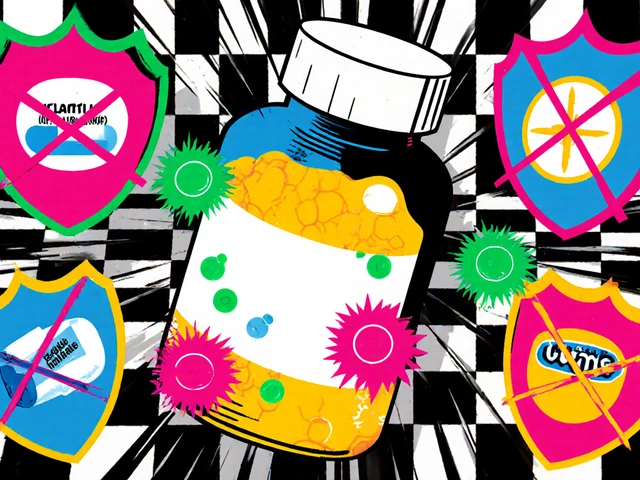When a pharmacist sees a brand-name prescription, they don’t just fill it. They evaluate whether a cheaper, equally effective generic version is appropriate-and then they talk to the prescriber. This isn’t just about saving money. It’s about ensuring patients get the right medication, stay on it, and avoid avoidable hospital visits. But getting a prescriber to agree isn’t always easy. It takes more than a quick phone call. It takes evidence, timing, and clarity.
Why Pharmacists Push for Generics
Generics aren’t second-rate drugs. They’re the same active ingredient, in the same dose, with the same intended effect as the brand-name version. The FDA requires them to meet strict bioequivalence standards: the amount of drug absorbed into the bloodstream must fall within 80% to 125% of the brand. In reality, 98.7% of approved generics fall within 95% to 105%, meaning they’re nearly identical in how the body handles them. The numbers speak for themselves. In 2023, 97% of all prescriptions filled in the U.S. were for generics. That saved $409 billion in healthcare costs. But cost isn’t the only win. A 2018 study of 12.7 million patients found that switching to generics improved medication adherence by 12.4%. That meant 28.6% fewer patients stopped taking their meds-and a 15.2% drop in hospital admissions for chronic conditions like high blood pressure and diabetes. So why don’t all prescribers automatically approve substitutions? Because some have concerns. A 2023 survey found 37.6% of prescribers worry generics might not work as well, especially for complex drugs like inhalers or topical creams. That’s where pharmacists step in-not to argue, but to inform.When Substitution Isn’t Allowed
Not every prescription can be switched. Some drugs have a narrow therapeutic index (NTI), meaning the difference between a helpful dose and a toxic one is tiny. For these, even small changes in how the drug is absorbed can matter. Examples include warfarin, levothyroxine, and phenytoin. The FDA doesn’t automatically treat all generics for NTI drugs as interchangeable. Pharmacists must check the Orange Book’s ratings and often consult with the prescriber before swapping. Then there are patients with allergies to inactive ingredients. Generics can use different fillers, dyes, or preservatives than the brand. About 8.7% of substitution issues stem from these differences. A patient allergic to lactose or a specific dye might have a reaction-even if the active ingredient is identical. Pharmacists flag these cases before dispensing. And sometimes, the prescriber writes “dispense as written” (DAW) on the prescription. That happens in about 15.3% of cases. In 68% of those cases, it’s because the prescriber has a documented clinical reason-not just habit. Pharmacists respect that. But they also know when to ask: “Is this based on evidence, or just tradition?”The FDA Orange Book: The Pharmacist’s Bible
The FDA’s Orange Book is the official source for therapeutic equivalence ratings. It lists every approved drug and assigns an “A” or “B” rating. An “A” rating means the generic is therapeutically equivalent to the brand. A “B” rating means it’s not. In 2023, 92.7% of generics had an “A” rating. Pharmacists use this daily. When a brand-name drug like Lipitor (atorvastatin) comes in, they check the Orange Book. If there’s an “A”-rated generic, they know it’s safe to substitute-unless the prescriber says otherwise. But they don’t just assume. They look up the manufacturer, the NDC code, and the specific product. That level of detail matters. The Orange Book also includes Product-Specific Guidances (PSGs). These are detailed documents that explain exactly how bioequivalence was proven for each drug. For example, a PSG for a modified-release tablet might show how the drug releases over 12 hours, not just how much gets absorbed. Pharmacists use these to answer prescriber questions with precision.How to Get a Prescriber to Say Yes
A generic recommendation isn’t a suggestion. It’s a clinical decision. And prescribers respond to structure, not noise. The American Society of Health-System Pharmacists recommends a four-step approach:- Reach out within 24 hours of receiving the prescription.
- Cite the Orange Book’s therapeutic equivalence rating.
- Share the cost difference-average wholesale price, not just retail.
- Document the conversation and outcome in the patient record.
Barriers Pharmacists Face
Time is the biggest hurdle. The 2023 National Pharmacist Workload Survey found pharmacists have only 2.3 minutes per prescription to verify everything-dosage, interactions, allergies, substitutions. That’s not enough to dig into complex cases. Knowledge gaps exist too. A 2022 study found 41.7% of pharmacists felt unsure about explaining modified-release generics or complex formulations like transdermal patches. That’s why the FDA runs quarterly webinars and “Orange Book Live” Q&As-12,345 pharmacists tuned in in 2022. Prescribers, too, are stretched thin. A 2023 Medscape report found 62.1% of primary care doctors say they don’t have time to review substitution requests. That’s why concise, data-backed messages work best. One study showed that adding specific bioequivalence numbers to a message increased acceptance by 34.2 percentage points.


